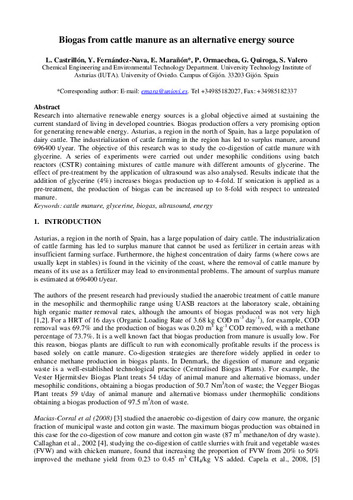Biomass waste as an alternative energy source in Asturias (Spain)
Subject:
Biomass
Bioenergy
Wood waste
Industrial waste
MSW
Manure
Publication date:
Abstract:
The aim of the present study was to evaluate the potential amounts of biomass resources that can be used to generate energy in Asturias, a region in Northern Spain. The biomass was characterised analysing the following parameters: moisture, ash content, organic matter content, elemental analysis (N, C, S and H) and calorific value. The biomass with the highest Lower Heating Value (LHV) on a wet basis is sawdust and splinter. Manure and sludge have a high content of ash (34-44% on a dry basis), compared with that of the MSW (27%) or with the very low value in the forest waste (1.5%). A very good correlation (R2 = 0.9817) is obtained between the LHV on a wet basis and the volatile solids content (also on a wet basis), determined at 850ºC.
The aim of the present study was to evaluate the potential amounts of biomass resources that can be used to generate energy in Asturias, a region in Northern Spain. The biomass was characterised analysing the following parameters: moisture, ash content, organic matter content, elemental analysis (N, C, S and H) and calorific value. The biomass with the highest Lower Heating Value (LHV) on a wet basis is sawdust and splinter. Manure and sludge have a high content of ash (34-44% on a dry basis), compared with that of the MSW (27%) or with the very low value in the forest waste (1.5%). A very good correlation (R2 = 0.9817) is obtained between the LHV on a wet basis and the volatile solids content (also on a wet basis), determined at 850ºC.
Patrocinado por:
Gijón City Council (Ref. SV-08-GIJON-3).
Collections
Files in this item





